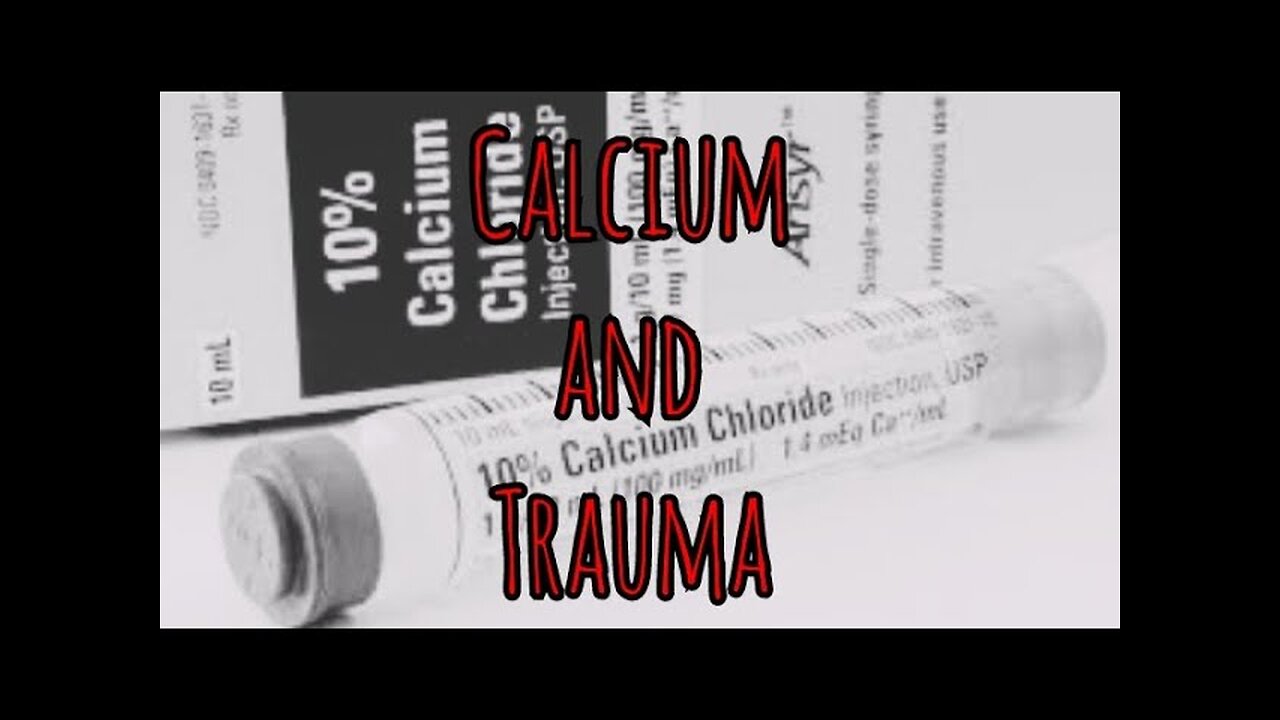Premium Only Content

Prolonged Field Care Podcast 178: Calcium and Trauma
In this podcast episode, Dennis interviews Steve Schauer about his calcium study in trauma patients. Steve provides an introduction to himself and his background in emergency medicine and research. He explains that the study aims to determine the prevalence of calcium derangement in trauma patients upon arrival at the trauma center. The study is being conducted at three different trauma centers and has completed enrollment. Steve also discusses the challenges of extrapolating research findings from military trauma to civilian trauma. They also touch on the limitations of the Injury Severity Score (ISS) in assessing military trauma. The conversation then delves into the logistics of the study, including the collection of calcium levels and the potential impact of pre-hospital blood transfusions on calcium levels. They discuss the importance of timing and accuracy in collecting calcium levels and the need for better documentation in trauma care. They also explore the administration of calcium and the differences between calcium gluconate and calcium chloride. Steve emphasizes the importance of administering calcium slowly to avoid adverse effects. They also discuss the timing of calcium administration in relation to blood transfusions and the challenges of determining the optimal calcium levels in trauma patients. The episode concludes with a discussion on the need for iStat machines in trauma centers to monitor calcium levels in real-time. In this conversation, Dennis and Steven Schauer discuss the administration of calcium in trauma patients. They explore the role of calcium in the coagulation cascade and its potential benefits in improving hemodynamics. They also discuss the challenges of administering calcium in the field and the need for further research to determine its efficacy. The conversation highlights the importance of prioritizing blood and tranexamic acid (TXA) administration before considering calcium. Overall, the conversation provides valuable insights into the use of calcium in trauma care.
Takeaways
The study aims to determine the prevalence of calcium derangement in trauma patients upon arrival at the trauma center.
Extrapolating research findings from military trauma to civilian trauma poses challenges due to differences in injury mechanisms.
The Injury Severity Score (ISS) has limitations in assessing military trauma.
Timing and accuracy are crucial in collecting calcium levels in trauma patients.
Calcium administration should be done slowly to avoid adverse effects.
Determining the optimal calcium levels in trauma patients is challenging.
iStat machines can be valuable in monitoring calcium levels in real-time. Calcium is a cofactor in the coagulation cascade and may play a role in improving hemodynamics in trauma patients.
The administration of calcium should be prioritized after blood and tranexamic acid (TXA) in trauma care.
The optimal method of calcium administration, such as infusion plus drip, is still under investigation.
Further research is needed to determine the efficacy of calcium in trauma care.
The availability of resources and logistics may influence the choice of calcium formulation for administration.
-
 LIVE
LIVE
Major League Fishing
4 days agoLIVE! - Bass Pro Tour: Stage 3 - Day 4
466 watching -
 1:05:28
1:05:28
Sports Wars
5 hours agoLebron GOES OFF Over Bronny Hate, Pereira LOSES Belt To Ankalaev At UFC 313, Xavier Worthy Arrested
21.8K6 -
 10:27
10:27
Tactical Advisor
1 day agoDMR or SPR for Civilian Use?
38.8K6 -
 8:21
8:21
DEADBUGsays
1 day agoThe Crossbow Killer
27.7K10 -
 8:40
8:40
Tundra Tactical
22 hours ago $7.62 earnedThe Executive Order Wishlist.
40.3K2 -
 7:22:52
7:22:52
SpartakusLIVE
21 hours agoSaturday SPARTOON Solos to Start || Duos w/ StevieT Later
121K2 -
 28:40
28:40
SLS - Street League Skateboarding
8 days agoTOP MOMENTS IN WOMEN’S SLS HISTORY! ALL THE 9’s - Rayssa Leal, Leticia Bufoni, Chloe Covell & more…
86.7K10 -
 2:03:03
2:03:03
The Connect: With Johnny Mitchell
18 hours ago $6.45 earnedHow Mexican & Chinese Cartels Control Illegal Marijuana Cultivation In America Using SLAVE Labor
39K6 -
 14:46
14:46
Mrgunsngear
20 hours ago $3.17 earnedPrimary Arms GLx 1x Prism With ACSS Reticle Review
43.5K8 -
 22:37
22:37
Degenerate Plays
19 hours ago $0.67 earnedI'm A Psychic Now - Elden Ring : Part 73
25.9K